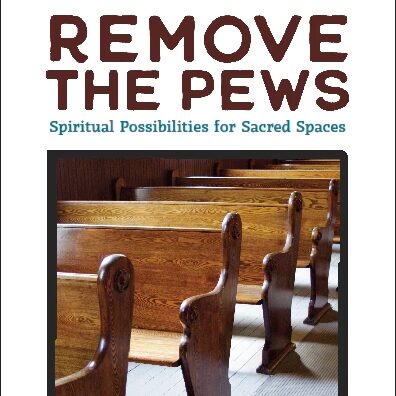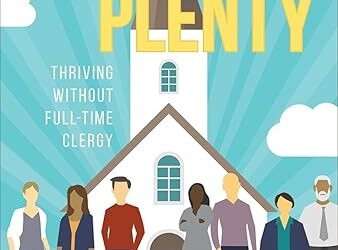Donna Schaper
Because of my work, my children have been brought to so many different churches that we really cannot count the number. They have honed a rating system of congregations, based on genuine friendliness, quality of food (good luck topping the congregation that put out a giant spread of Korean cuisine and taught them how to expertly use chopsticks), and how good the seats are. Bonus points are given to congregations with comfortable chairs that include pencils, crayons, and paper and those that have the special long and polished pews that allow them to take a running leap and slide all the way down. I have worked alongside congregations that have struggled mightily with their ability to effectively use their space, constantly stymied by the walls, lack of flexible seating, and even more so, lack of nimble imagination in visioning possibilities. When Remove The Pews; Spiritual Possibilities for Sacred Spaces arrived in my mailbox from the publisher for my review, I was excited to see if other people had noticed the connection between flexibility in physical space, the ability to vision, and the gumption to chart the new course that the ministries require. Spoiler alert: I am not alone.
The author was the lead pastor at a congregation that decided to remove all pews in their urban Manhattan church. Why? “(T)o beautify, understand, and sacralize change.” It is seen as “a simple way to open space and invite new uses.” What was her congregation able to support as a result? 2,200 people come through their doors each week in the forms of 4 different worshipping congregations, a black box theater, a dance company and school, a chorale, social services provided for new immigrants, movie companies, and other market rate groups, on top of their existing in-house ministries. A space-use policy equipped the congregation to give away half of the available time and space by charging rent on the other half. Removing the pews freed them from the barriers of fixed seating and preconceived ideas of how the building should be used (rather than how the building exists to support and augment ministry).
Are you needing a booster shot of why we need to vision and adapt in ministry? This book will help. Do you need solid ideas from someone who has radically changed the make-up a building to fit the needs of ministry? This book will deliver. Do you have some people that are reluctant to come along but will do so with gentle encouragement and excitement about possibility? Hand them this book. Are you preparing for a retreat to prepare your congregation for visioning and response to the needs of the community through mission? This would be a wonderful resource. Do you keep a selection of titles that help inspire you when you need encouragement? This title belongs there. If you are emerging from pandemic life, ready to get down to ministry in your current setting with eyes towards the future, a reading of this resource can only help you along the path. I’m certain you’ll find something that will help you.





0 Comments